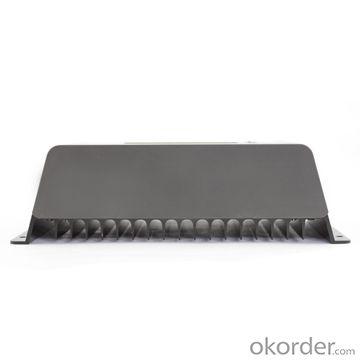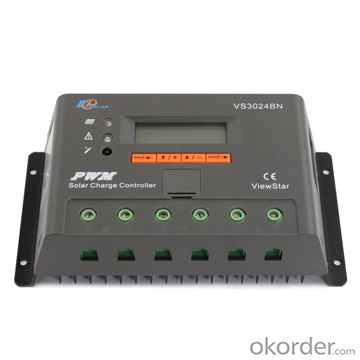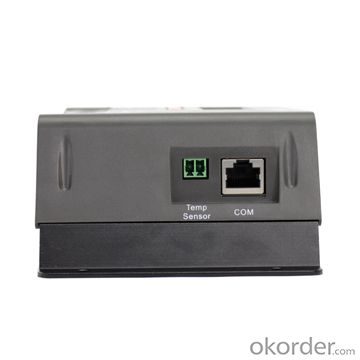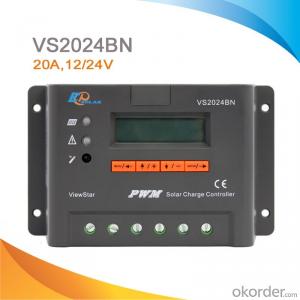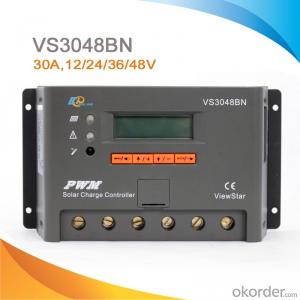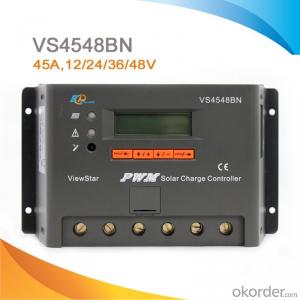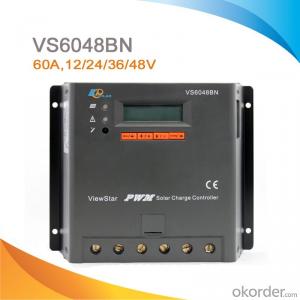Rv Solar Controllers - LCD/LED High Quality PWM Solar Panel Charge Controller/Regulator with CE ROHS, 30A 12V/24V, VS3024BN
OKorder Service Pledge
OKorder Financial Service
You Might Also Like
Features:
·Excellent EMC design
·32 bit MCU with high speed
·High efficient Series PWM charging
·Four battery type options: Sealed, Gel, Flooded, and USER
·Intelligent lighting and timer control for solar lighting system
·12 bit A/D high-precision sampling to ensure accuracy
·Use MOSFET as electronic switch
·Full control parameters setting and modification, diversified load control mode
·Humanized design of browser interface, undertake every operating conveniently
·Temperature compensation
·Adopt graphics dot-matrix LCD screen and HMI (human-machine interface) with 4 buttons,integrated menu displaying and operation
·Energy statistics function
·RS485 ports with MODBUS communication protocol
·Optional PC monitoring software and remote meter for real-time monitoring and battery management parameter setting
·Field upgradable firmware
Electronic Protections:
·PV short circuit protection
·PV reverse polarity protection
·Battery overcharge protection
·Battery over discharge protection
·Battery reverse polarity protection
·Load overload protection
·Load short circuit protection
·Overheating protection
Specification:
Model | VS1024BN | VS2024BN | VS3024BN | VS4524BN | VS6024BN |
Nominal system voltage | 12V/24V auto work | ||||
Rated battery current | 10A | 20A | 30A | 45A | 60A |
Rated load current | 10A | 20A | 30A | 45A | 60A |
Max. battery voltage | 32V | ||||
Equalize charging voltage | Sealed: 14.6V, Flooded: 14.8V, User-defined: 9~17V | ||||
Boost charging voltage | Gel: 14.2V, Sealed: 14.6V, Flooded: 14.8V, User-defined: 9~17V | ||||
Float charging voltage | Gel /Sealed /Flooded: 13.8V, User-defined: 9~17V | ||||
Low voltage reconnect voltage | Gel /Sealed /Flooded: 12.6V, User-defined: 9~17V | ||||
Low voltage disconnect voltage | Gel /Sealed /Flooded: 11.1V, User-defined: 9~17V | ||||
Self-consumption | ≤15mA(12V); ≤10mA(24V); ≤9mA(36V); ≤8mA(48V) | ||||
Grounding | Common negative | ||||
Temp. compensation | -3mV/°C/2V | ||||
Relative humidity | 10%~90% Non-condensation | ||||
Communication | RS485 / RJ45 interface | ||||
LCD temperature | -20°C ~ +70°C | ||||
Working temperature | -25°C ~ +55°C | ||||
Humidity | ≤95% N.C. | ||||
Enclosure | IP30 | ||||
Overall dimension | 162x85x40mm | 162x100x50mm | 200x103x58mm | 201x109x59mm | 205x129x67mm |
Terminals | 4mm2 | 10mm2 | 16mm2 | 35mm2 | 35mm2 |
Net weight | 0.2kg | 0.4kg | 0.7kg | 0.9kg | 1.3kg |
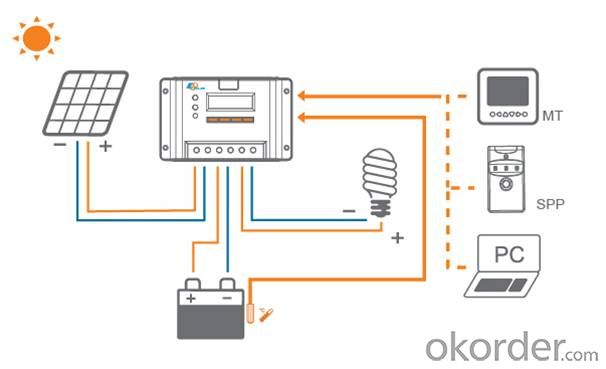
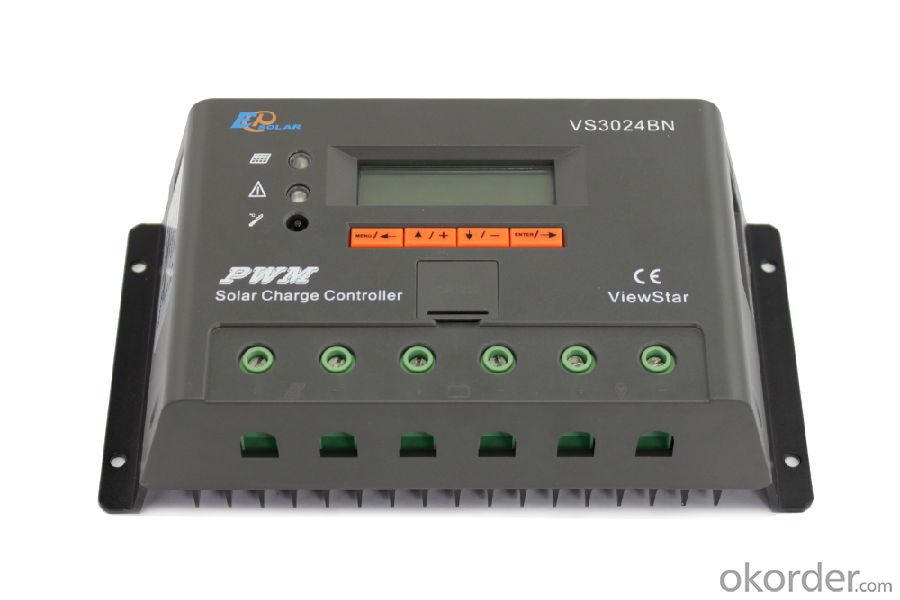
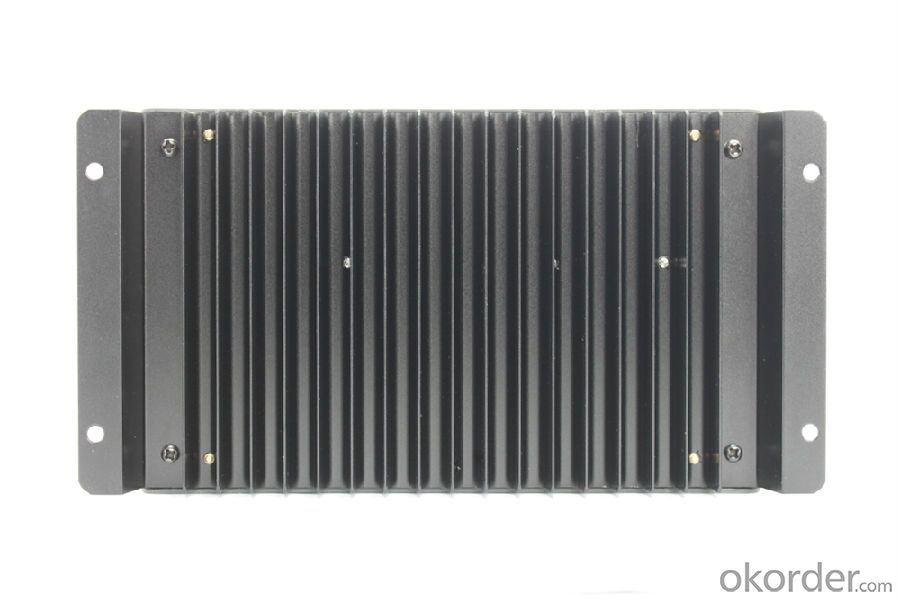


FAQ:
Q1. What is the voltage?
A1. Our 45/60A solar charge controller is 12/24/36/48V auto work.
Q2. What is the difference between MPPT&PWM?
A2. MPPT has higher efficiency, it can track the max power point and won't waste energy.
Q3. What is the efficiency of the MPPT controller?
A3. MPPT>99%, peak conversion efficiency>98%.
Q4. What is the waranty of product?
A4. 12 months.
Q5. What protection does your MPPT controller have?
A5. PV array short circuit, PV reverse polarity, Battery reverse polarity, Over charging, Output short circuit
- Q: Can a solar controller be used with different types of batteries?
- Yes, a solar controller can be used with different types of batteries. However, it is important to ensure that the solar controller is compatible with the specific type of battery being used in order to optimize charging and prevent damage to the battery.
- Q: Can a solar controller be used with a solar-powered hydrogen production system?
- Yes, a solar controller can be used with a solar-powered hydrogen production system. A solar controller helps regulate the flow of electricity from the solar panels to the hydrogen production system, ensuring optimal charging and preventing overcharging or damage to the system. It helps optimize the efficiency and performance of the system by managing the energy generated by the solar panels.
- Q: What is the maximum voltage drop allowed in the system by a solar controller?
- The maximum voltage drop allowed in a system by a solar controller depends on the specific controller's specifications and requirements. It is essential to consult the manufacturer's guidelines or documentation to determine the exact maximum voltage drop allowed for that particular solar controller.
- Q: Can a solar controller be used with a generator backup?
- Indeed, a generator backup can be coupled with a solar controller. It is actually quite prevalent to integrate solar systems with generator backups to maintain an uninterrupted power supply. The solar controller serves as the mediator between the solar panels and the battery bank, managing the energy flow and preventing excessive charging or discharging of the battery. When there is insufficient solar power, the generator backup can be engaged to supplement the system with extra electricity. This fusion enables a dependable and eco-friendly power resolution by harnessing renewable energy from the sun and utilizing generator backup when necessary.
- Q: Can a solar controller be used with solar microinverters?
- Yes, a solar controller can be used with solar microinverters. A solar controller is responsible for regulating the charge of the battery bank in a solar power system, while a microinverter converts the DC power generated by each individual solar panel into AC power for use in the electrical grid or for consumption. The solar controller and microinverters serve different functions in a solar power system and can work together to optimize the performance and efficiency of the system. The solar controller manages the overall battery charging process, while the microinverters handle the conversion of power at the individual solar panel level. Both components are necessary for a complete and effective solar power system.
- Q: What is the maximum operating altitude of a solar controller?
- The maximum operating altitude of a solar controller can vary depending on the specific model and manufacturer. However, most solar controllers are designed to operate effectively at altitudes of up to 10,000 feet (3,048 meters) or higher. It is important to check the specifications provided by the manufacturer for the specific solar controller being used to determine its maximum operating altitude.
- Q: How do you troubleshoot common issues with a solar controller?
- To troubleshoot common issues with a solar controller, you should first check the connections to ensure they are secure and free from corrosion. Next, verify that the solar panels are receiving adequate sunlight and that they are connected properly to the controller. Additionally, examine the battery connections and ensure they are clean and tightly connected. It's crucial to inspect the controller's display for any error codes or abnormal readings, which may indicate a malfunction. Finally, consult the manufacturer's manual or online resources for specific troubleshooting steps and contact technical support if further assistance is needed.
- Q: Can a solar controller be used with a solar-powered security camera?
- Yes, a solar controller can be used with a solar-powered security camera. A solar controller helps regulate the charging of the battery in the solar-powered camera system, ensuring efficient power management and preventing overcharging or discharging. It also enables the camera to operate continuously by optimizing the solar panel's output and storing excess energy in the battery for use during low-light conditions.
- Q: How do I connect a solar controller to a remote monitoring system?
- To connect a solar controller to a remote monitoring system, you will typically need to follow a few steps. First, ensure that your solar controller is compatible with a remote monitoring system. Check the specifications and documentation provided by the manufacturer to confirm this compatibility. Next, identify the communication method supported by your solar controller and the remote monitoring system. It could be via Wi-Fi, Ethernet, cellular network, or other protocols. This information will help you determine the necessary hardware or software components required for the connection. Once you have the necessary components, follow the instructions provided by the remote monitoring system to set up the connection. This may involve configuring network settings, entering authentication details, or registering your solar controller on the monitoring platform. Ensure that both the solar controller and the remote monitoring system are powered on and connected to the same network or communication channel. Test the connection to verify that data from the solar controller is being transmitted and displayed on the remote monitoring system. If you encounter any difficulties during the setup process, consult the user manuals or reach out to the manufacturers for further assistance.
- Q: Can a solar controller be used with solar-powered water treatment plants?
- Yes, a solar controller can be used with solar-powered water treatment plants. A solar controller is responsible for regulating and optimizing the charging and discharging of batteries in a solar system. Since solar-powered water treatment plants rely on solar panels to generate electricity, a solar controller is essential to ensure efficient utilization of solar energy and to protect the batteries from overcharging or excessive discharge.
Send your message to us
Rv Solar Controllers - LCD/LED High Quality PWM Solar Panel Charge Controller/Regulator with CE ROHS, 30A 12V/24V, VS3024BN
OKorder Service Pledge
OKorder Financial Service
Similar products
Hot products
Hot Searches
Related keywords





